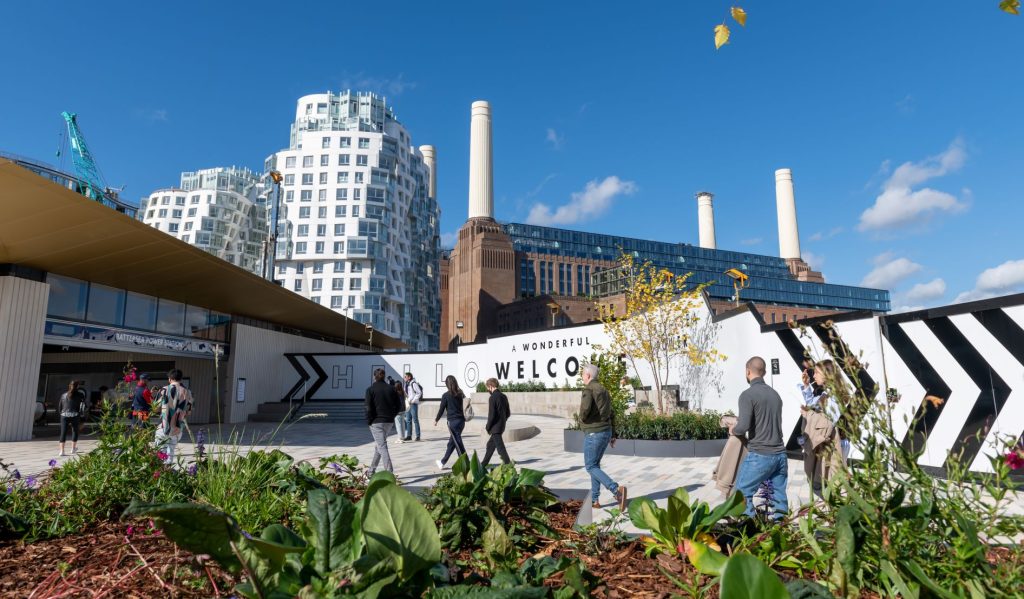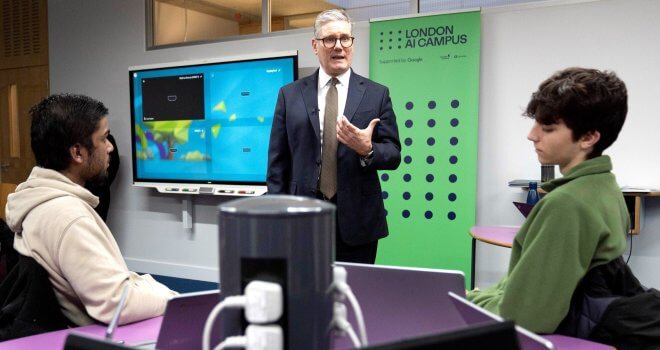Battersea Power Station: The Project View

Today, London welcomes activity back to one of its most iconic landmarks: the Battersea Power Station. Once responsible for a fifth of the capital’s electricity, the station has endured four decades of decay since its closure in 1983. Now – thanks to a £9 billion project that has so far lasted a decade – the Power Station’s four chimneys will radiate energy across Battersea once more.
The nine-year redevelopment is one of London’s greatest – and most public – projects in a generation. When the Power Station’s full completion is achieved in 2030 – 2,400 homes are still to be built – it is expected to house 25,000 people and attract 25 million to 30 million of visitors every year. It will become a legacy hub of culture, community, and entertainment for the capital.
So – with the weight of a £9 billion budget and the heritage of one of London’s most iconic buildings in their hands – those leading the redevelopment of the Battersea Power Station have produced a project management case study we can all learn from. Here are some of the leading takeaways from what was once dubbed “the toughest project in the world”.
Collaboration unlocks progress
“I cannot stress enough how important the collaboration between these organisations has been to overcome [key] issues.” The words of Jason Cowell, senior project director of the Battersea Power Station Development Company (BPSDC) – the developer that led the project – embody the significance of working together to the ultimate success of the outcome.
The Battersea Power Station project team encompassed dozens of contributors, from construction firms and architects to cost consultants and steelwork specialists, which can quickly descend into an embodiment of “too many cooks spoil the broth” if not managed correctly.
However, by co-locating every party in one HQ building throughout the project, the BPSDC created a project heartbeat that left no-one in silos and ensured issues could be navigated together without communication hurdles. According to Cowell, the physical togetherness also bred a collective spirit and responsibility to get the project right and live up to the faith that local stakeholders were putting into them.
Managing a changeable budget by staying agile
Naturally, with a project comprising of as many variables as that of the Battersea Power Station, sticking to budget was always destined to be one of the main challenges of the redevelopment. While the overall budget of £9 billion is sizeable, the amount needed to be done with that sum – including the redevelopment of the Power Station itself and the creation of housing and transport links in the surrounding area – meant leeway for scope creep was minute.
When, in 2017, it was revealed that the cost for the Power Station alone had exceeded £1.15 billion – versus the initial estimate of £750 million – it was quickly decided that the procurement direction needed to change to avoid losing control of the project’s finances.
The project team enrolled Mace to pivot to construction management – meaning multiple subcontractors were employed instead of a single main contractor. This enabled the project team to stay agile to the varying challenges that arose throughout the assessment and building processes and work directly with each specialist sub-contractor to mitigate risks and find solutions.
By deploying construction management, the BPSDC also avoided paying a lump sum – which would have been exponentially more expensive – and kept costs “very stable”, according to Cowell, throughout the remaining duration of the project.
This again reiterates the increasing need to ensure projects are equipped with construction professionals and leaders that have been sufficiently trained in project management principles. We recently teamed up with industry experts – including to create our Construction Professional in Built Environment Projects qualification. The Battersea Power Station redevelopment is undoubtedly a critical reference point for any construction professional upskilling in project management.

Keeping the project on track
The reality of approaching a redevelopment as complex as the Battersea Power Station is that, however much it’s surveyed and assessed, there will always be unexpected challenges that arise as the workers unpack the building. As such, risk assessment and its impact on timelines can only be anticipated to a certain level of accuracy.
For example, the rebuilding of the chimneys was more complex than anticipated as they had been badly cracked and exposed to weather over a long period of time, and the scale of asbestos was larger than previously imagined, making it both more expensive and time-consuming. These problems can cause work on other areas to stop and therefore cause major delays to timelines. When your project is a front-page story, it can be hard to convey the finer details of a setback.
Once again, however, a detail as trivial as where project team members were stationed drove productivity that accelerated progress. The original designers of the new development were full-time fixtures on-site, meaning that the project team could instantly consult them on any issues rather than sending them into a backlog that could take weeks to work through.
This setup fostered an agile working culture on the development site and enabled the project team to adapt quickly and streamline processes that were causing delays. For example, the structure of the scaffolding in the first turbine hall they worked on was prohibitive to productivity and speed. So, for the second turbine hall, it was replaced with scaffolding that took up less space and enabled work to be conducted in multiple areas of the hall at the same time.
While these decisions may seem trivial in isolation, they all represent building blocks of a wider project management approach that resembles what we call Wicked Problem Solving. Specifically aimed at addressing more complex, interconnected issues – a category Battersea Power Station certainly falls into – Wicked Problem Solving is rooted in cognitive science and incorporates elements of design thinking, lean and agile practices.
When Battersea Power Station opens its doors today, it will unveil the product of one of London’s most complex projects for a generation. While its challenges have been plentiful, and public, the end result will leave little room for anything other then admiration. At the heart of the bars, restaurants, and accommodation lies a case study cemented in the history of project management in the UK.
Manny Gill is UK Business Head of the Project Management Institute.




